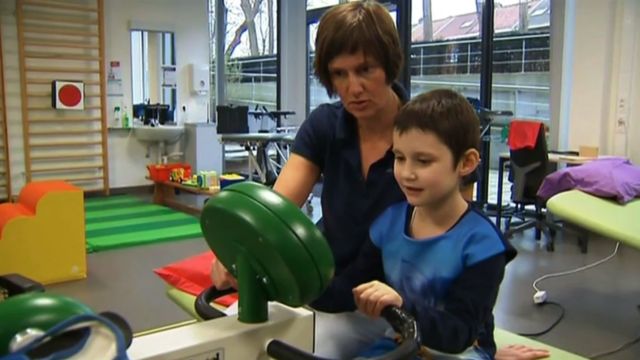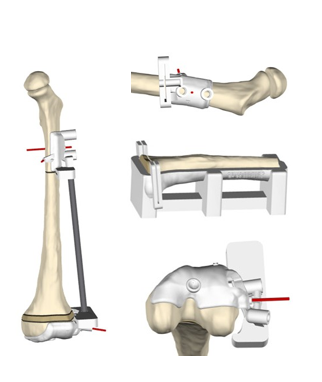Six-year-old Helena had a malignant tumor in her upper left leg. A condition which had earlier appeared to be a bone infection was revealed after medical imaging to be worse than feared: bone cancer.
To complicate things further, the tumor was located close to Helena’s knee. While the removal of the tumor would usually require a 3cm margin with a conventional procedure, in Helena’s case this would have meant removing the entire knee joint and an amputation would probably have been inevitable. For a child who loves dancing, Helena’s mother worried that the procedure would have been profoundly life-altering.
However, Dr. Gwen Sys, orthopedic surgeon at University Hospital Gent, saw that 3D Printing could offer a better solution. This is how Dr. Sys managed to save Helena’s knee joint, by reducing that 3cm margin, in this special procedure involving 3D Printing.



On the basis of CT/MRI images a 3D virtual model is created
3D Printing for Precision
Together with Materialise, Dr. Sys and a clinical engineer made a 3D-printed model using Helena’s MRI scans and CT data. Materialise’s Mimics software creates a 3D reconstruction from MRI imaging, which was then printed to create an exact copy of the bone. Based on the virtual 3D model, the team formulated a surgical plan with Dr. Sys with guides that enabled her to operate with the utmost precision.
If there is any application where one size fits one and only one, it may be surgery. 3D Printing offers an extreme precision and complete customizability, and the opportunity to prepare for a procedure with a 3D-rendered reconstruction of the patient’s anatomy.

Patient-Specific Guides and Implants*
Dr. Sys had surgical guides designed especially for Helena, to help control the variables of the challenging procedure. The use of surgical guides ensured an accurate transfer of the painstaking pre-surgical planning to the actual surgery. With the help of 3D Printing, the team made metal plates, printed in titanium.
Owing to the precision afforded by the technology and the surgical team’s preparation of guides and metal plates, Dr. Sys was able to save Helena’s knee joint while removing the malignant tumor.
“3D Printing technology makes it possible to remove malignant tumors in an extremely meticulous way,” notes Dr. Sys.“It’s truly patient-specific.”
In the meantime, Helena has had chemotherapy and continues to undergo regular physiotherapy: the path of recovery is an arduous one, but the young patient is perseverant and cheerful. Watch Helena’s mother and surgeon recount her journey in this video.
*The patient-specific plate and guides for tumour resection are not commercially available in the US and Canada.
